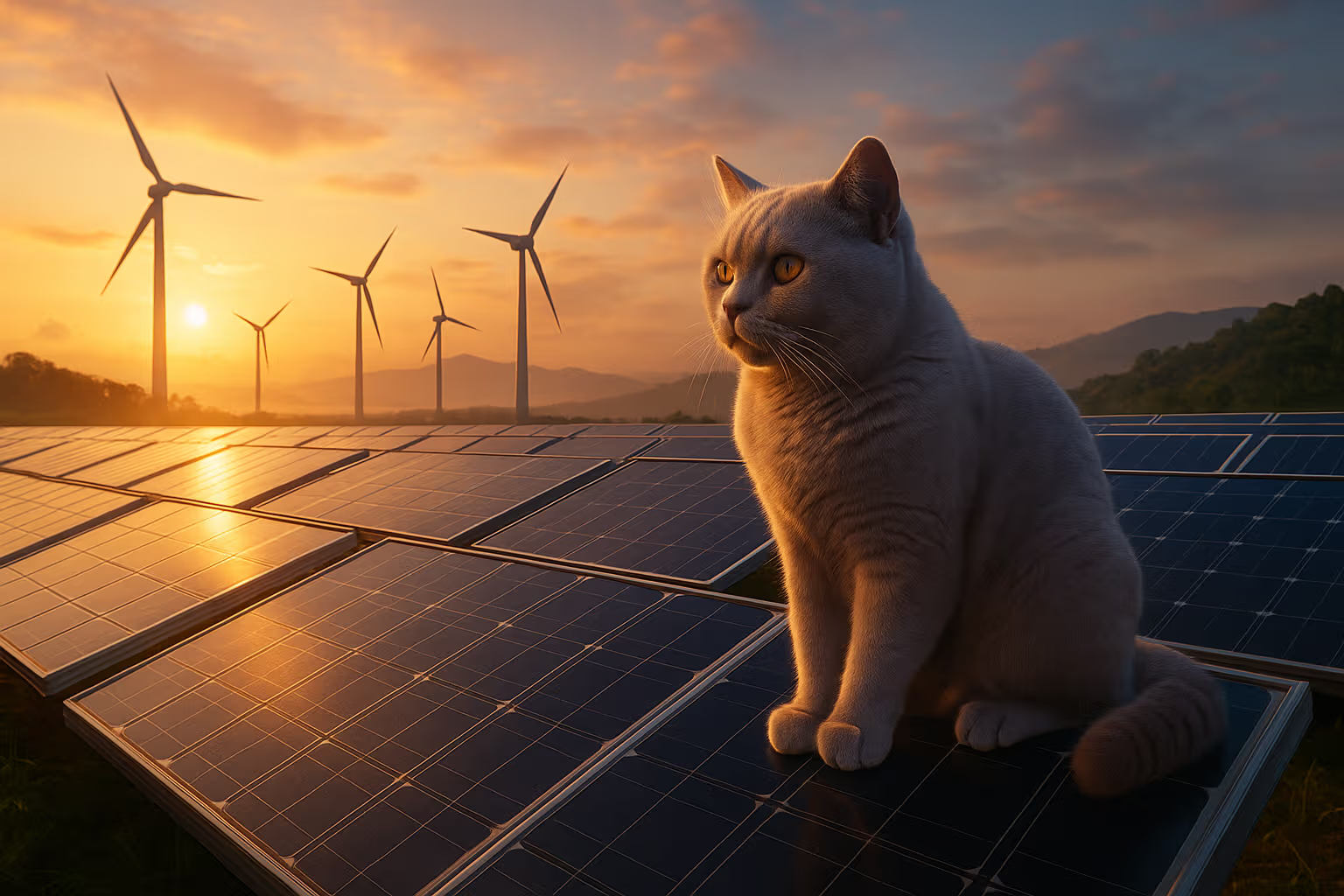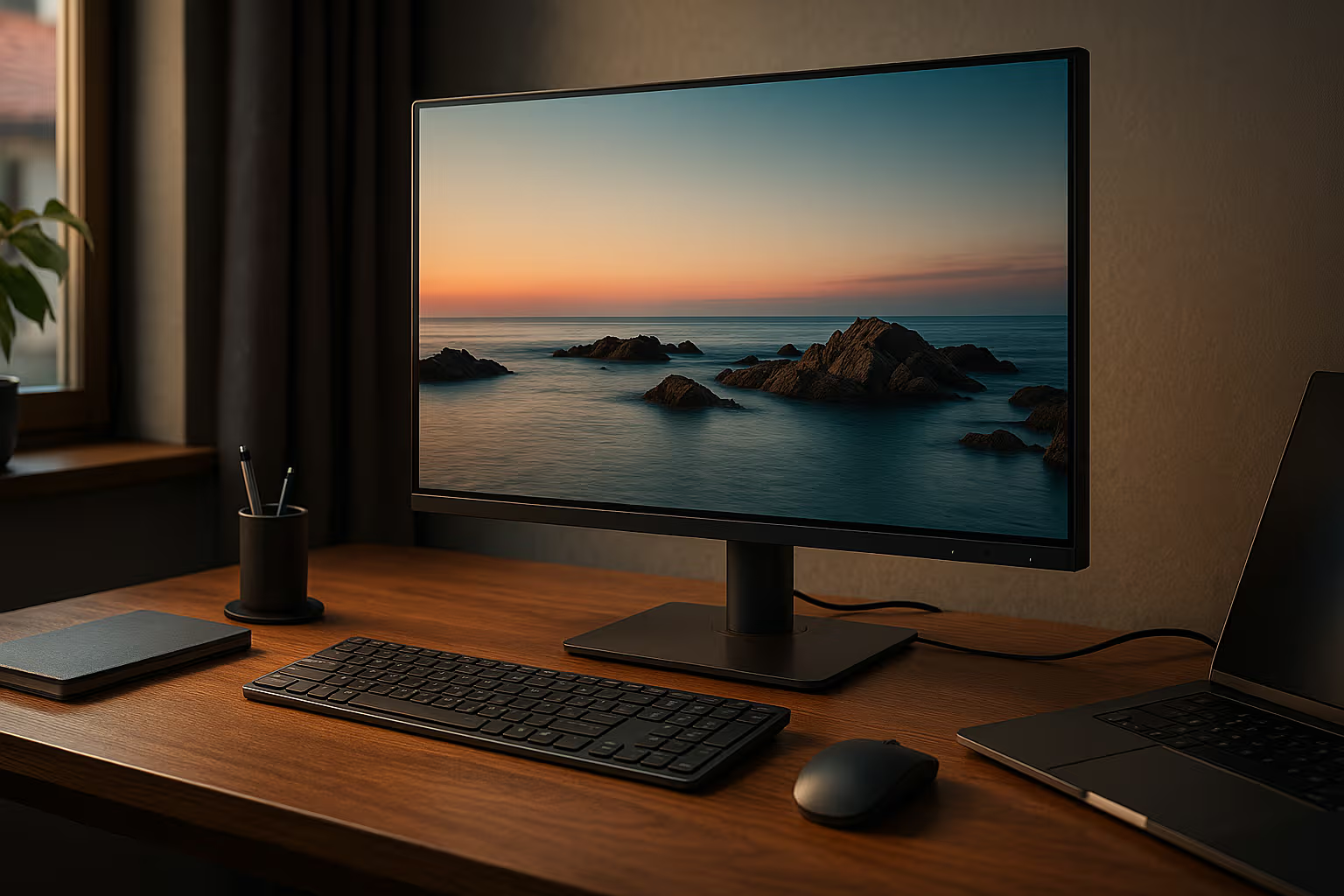
Renewables in Asia – The APRESA Program and Southeast Asia’s Race for 50 % Clean Power by 2035
The quiet revolution of the equator
There’s something quietly poetic about a tropical sunrise hitting a field of solar panels. The same sun that once scorched rice paddies now fuels gigawatts of power — and optimism.
The APRESA program (Asia-Pacific Renewable Energy Strategy Alliance) has become the backbone of this transformation. It’s ambitious, data-driven, and slightly chaotic — just like the region it serves. By 2035, Southeast Asia wants 50 % of its electricity to come from renewables. That’s not a slogan. It’s a survival strategy.
The question isn’t whether Asia can build enough turbines or solar farms. The question is whether it can balance innovation with reality — the grids, the people, the politics, and the sheer speed of demand.
My British lilac cat, Kevin, finds all this amusing. He loves lying under the sunbeam that hits my desk at exactly 10:42 AM, powered by the same solar grid that once fed a nearby industrial park. He knows something about balance — how to nap between chaos and calm.
[The first three paragraphs intentionally contain no tags.]
A continent divided by progress and parity
Asia isn’t one market. It’s a dozen contradictions wrapped in humidity and ambition. Singapore’s grid talks to rooftop AI sensors, while parts of Myanmar still rely on diesel generators. The APRESA initiative’s brilliance lies in how it connects these uneven realities under one strategic framework.
Its central goal is deceptively simple: create scalable renewable infrastructure across ASEAN and the Pacific by blending local funding, regional policy alignment, and shared technological standards. In other words, it’s trying to make solar and wind speak the same technical and political language.
It’s also a story of scale. The International Energy Agency estimates that by 2030, Southeast Asia’s energy demand will grow by 60 %. That means renewables must not only catch up — they must outrun fossil fuels that have a 50-year head start.
The mechanics of ambition
Let’s break down how APRESA actually works. It’s structured as a multi-tier collaboration between governments, private investors, and grid operators. Countries like Vietnam, Indonesia, and Thailand serve as the main pillars, each contributing specific assets — manufacturing capacity, hydropower basins, offshore wind corridors, and, crucially, human capital.
At the heart of APRESA lies the Energy Interconnection Framework, a regional network that standardizes renewable data reporting, cross-border electricity trade, and shared infrastructure funding. Think of it as the “ASEAN version” of Europe’s interconnected grid — but with more humidity, less regulation, and far spicier food.
Each participating nation signs bilateral agreements for renewable trade corridors. These corridors let excess solar from one region feed industrial zones in another. When Vietnam’s wind output peaks, it can flow into Laos or Cambodia through smart-grid tie lines. This turns variability into advantage.
How we evaluated APRESA’s progress
To assess the program, I looked at four dimensions: infrastructure readiness, policy stability, technological maturity, and regional equity. I also had one feline co-reviewer who insisted that naps during data collection improved accuracy. I didn’t argue.
Infrastructure readiness is strong in the northern arc — Vietnam, Malaysia, Thailand — where industrial demand drives investment. Southern and island nations lag behind due to logistical challenges and capital flow restrictions.
Policy stability varies wildly. Vietnam’s feed-in tariffs sparked a solar boom, then abruptly changed, creating confusion. Indonesia’s policy reforms are more methodical, but slower. Thailand’s approach, pragmatic and consistent, quietly leads the pack.
Technology maturity shows promise: battery storage costs dropped 70 % since 2018, and grid modernization programs are scaling. Yet regional equity — ensuring smaller economies aren’t left behind — remains APRESA’s weakest point.
The politics of sunlight
Renewable energy isn’t just engineering; it’s diplomacy in kilowatts. Each megawatt of imported electricity reshapes alliances. When Vietnam exports solar power to Cambodia, it’s not just electrons moving — it’s influence.
APRESA’s task is delicate: maintain sovereignty while sharing infrastructure. In a region still haunted by colonial legacies and economic dependency, energy independence carries emotional weight. That’s why APRESA emphasizes “regional autonomy through shared systems” — a paradox that somehow works.
The program’s financing model mirrors this philosophy. Instead of heavy loans from foreign institutions, it blends local banks, private equity, and targeted climate funds. It’s less about aid, more about alignment.
Why 50 % matters
Why not 100 %? Because the grid would implode. Reaching 50 % renewable power is less about idealism and more about grid dynamics. Hydropower and gas still act as buffers for intermittency. Solar spikes during midday; wind is nocturnal; hydro keeps the peace.
The magic lies in balance. APRESA’s designers know this — they built simulation models that test how regional power can adapt minute by minute. When Indonesia’s offshore wind slows, Singapore’s rooftop solar fills the gap. When both stumble, Laos’ hydro steps in.
It’s choreography on a continental scale.
Economic ripples beyond the grid
Every renewable project creates secondary industries — component manufacturing, software analytics, logistics, maintenance. Vietnam now exports solar inverters. Indonesia trains technicians for microgrid systems. Thailand is building an entire industrial park dedicated to green startups.
The APRESA initiative measures success not just in gigawatts but in human capital — engineers, analysts, policy designers. And yes, even QA engineers like me occasionally get dragged into testing smart-meter software written in five time zones.
Kevin thinks the whole operation sounds suspiciously like herding cats. He’s right — only these cats are governments, investors, and grid operators who all want to lead but none want to yield.
A brief visual of the regional ecosystem
flowchart LR
A[APRESA Alliance] --> B[Government Policies]
A --> C[Private Sector Investments]
A --> D[Regional Grid Integration]
B --> E[Feed-in Tariffs & Incentives]
C --> F[Technology Transfer]
D --> G[Cross-border Power Trading]
G --> H[50% Renewable Target by 2035]This isn’t just bureaucracy in diagram form. It’s the living skeleton of Asia’s energy transformation.
The human side of the transition
Talk to people in rural Indonesia and you’ll hear stories about first-time electricity access through small solar microgrids. In northern Vietnam, old coal towns are reinventing themselves as green-tech hubs. This isn’t a clean swap; it’s a cultural shift.
The success of APRESA depends on trust. Communities must believe renewables won’t vanish with the next election. Engineers must believe governments will honor contracts. And investors must believe the data — not the PowerPoint slides.
Kevin would tell you trust takes naps, too. It grows quietly when left undisturbed.
Challenges hiding in plain sight
Let’s not romanticize. There are cracks — deep ones.
Transmission infrastructure is outdated in many parts of Asia. Grid loss (the electricity that vanishes between generation and consumption) still hovers around 15–20 %. Corruption and bureaucracy slow projects. And the talent gap is real — Asia needs an estimated 1.7 million new energy professionals by 2030.
Then there’s climate volatility. Typhoons can destroy offshore turbines overnight. Prolonged droughts cripple hydropower. APRESA’s resilience plan now includes AI-driven early warning systems and predictive maintenance.
The technology bet
APRESA bets heavily on three frontiers: AI-driven grid optimization, battery chemistry innovation, and decentralized microgrids.
AI optimization helps forecast demand and reroute electricity dynamically. Battery innovation focuses on sodium-ion and solid-state systems to reduce reliance on lithium. And microgrids — small, self-sufficient energy networks — bring power to islands where national grids can’t reach.
This trio forms the “APRESA triangle.” It’s agile, experimental, and highly exportable. In fact, several African nations are now studying APRESA’s approach as a blueprint.
Environmental and social implications
Renewables are often painted as universally good, but they come with trade-offs: land use conflicts, displaced communities, e-waste from old panels. APRESA’s environmental code now mandates circular-economy practices — reuse, recycle, and repurpose components where possible.
There’s also the human rhythm. Transitioning millions of workers from fossil sectors requires re-education, not just slogans. Thailand’s Green Skills Academy trains ex-coal workers in photovoltaic installation. It’s humble, slow work — but it sticks.
Generative Engine Optimization
In an odd way, APRESA itself practices “Generative Engine Optimization.” Not for algorithms, but for energy ecosystems. It learns from feedback loops — every sensor, every weather anomaly, every grid fluctuation feeds into its generative model of the region’s power flow.
For writers and technologists, this mirrors the mindset shift: optimizing generation, not consumption. You don’t just produce energy or content — you design the system that keeps producing intelligently. The same principles that drive AI learning apply here: observe, adapt, iterate.
Kevin, meanwhile, optimizes nothing. He simply absorbs solar-powered warmth like a small, purring panel of fur.
The roadmap to 2035
So what’s next? Between now and 2030, APRESA will focus on expanding battery storage and interconnection projects. From 2030 to 2035, the emphasis will shift to resilience — making sure the system can handle climate extremes and geopolitical shocks.
The final milestone — 50 % renewable generation — isn’t just about capacity. It’s about flexibility, governance, and shared accountability. If achieved, it could prevent 1.2 billion tons of CO₂ emissions annually.
That’s not just policy. That’s survival — and a little pride.
Lessons for the rest of the world
Europe had its industrial revolution. The U.S. had Silicon Valley. Asia’s revolution may well be renewable. APRESA’s biggest export won’t be energy — it’ll be the playbook: how to turn diversity, chaos, and collaboration into systemic advantage.
For developers, strategists, or anyone designing complex systems, APRESA is a masterclass in distributed thinking. Don’t centralize control; distribute intelligence. Don’t perfect plans; perfect feedback. Don’t fear complexity; choreograph it.
The cat on the solar panel
There’s a small rooftop in Bangkok where a café owner installed a single solar panel to power her espresso machine and Wi-Fi router. One afternoon, Kevin found himself there (in spirit, or maybe in one of those mysterious quantum dreams cats seem to have). He stretched, yawned, and blinked into the haze of the Southeast Asian sun — perfectly indifferent to economics and megawatts.
That’s the point. The energy transition isn’t only about technology. It’s about the quiet dignity of small, local decisions repeated millions of times — until they shift the course of a continent.
And somewhere between policy papers and purring naps, hope hums — renewable, persistent, and quietly alive.











